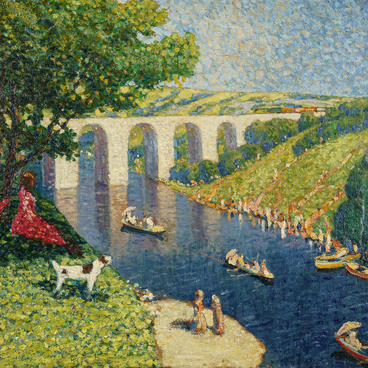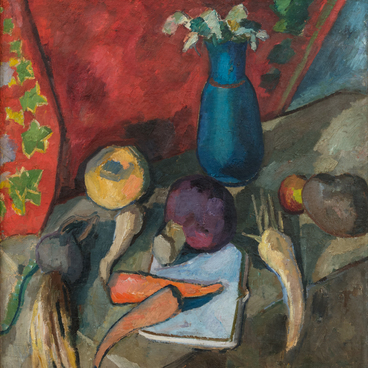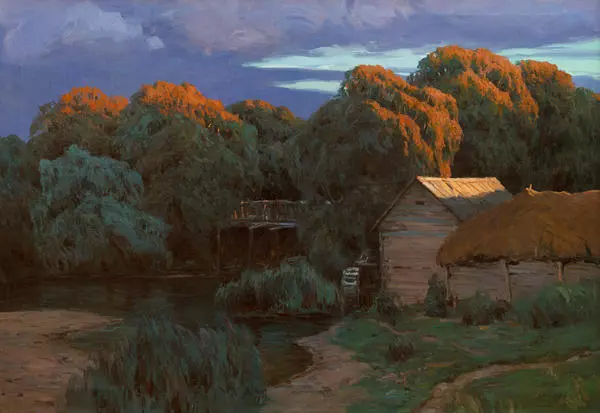Yevgeny Ivanovich Stolitsa was born into a family of a forester in the Odessa Oblast in 1870. In 1888, he started attending classes at the Imperial Academy of Arts in Saint Petersburg. At first, he studied as a non-matriculated student and in 1890, he became a permanent student of Mikhail Konstantinovich Klodt. Later, he attended the workshop of Arkhip Ivanovich Kuindzhi, who had a great influence on his work.
Yevgeny Stolitsa traveled extensively along the Volga and Dnieper Rivers, the Caspian and Black Seas. In 1896, he visited the Russian Far North. He participated in the voyage of the “Yermak” icebreaker, visited Sweden, Norway, and England. In 1899, he participated in another two polar expeditions on the “Yermak” icebreaker.
Yevgeny Stolitsa brought home sketches and studies which he used to create a series of paintings exploring the nature of the Arctic.
In 1904, he was posted to Admiral Makarov’s headquarters in Port Arthur where he worked on a series of battle paintings.
In 1916, Yevgeny Stolitsa moved to Ananyev, a small town in Kherson Governorate, where the artist’s family lived and where he created many of his rural landscapes. Later, the artist’s museum was opened there.
In 1922–1924, Yevgeny Stolitsa lived in Sergiyev Posad where he worked as a curator of the Museum of the Trinity Lavra of St. Sergius Monastery and restored icons.
Having finally settled in Moscow in 1924, the artist joined the Association of Artists of Revolutionary Russia and participated in its exhibitions throughout the Soviet Union.
Yevgeny Stolitsa often painted ordinary countryside views — wooden huts, worn-out fences, mills, and wide expanses of Central Russia — preferring to use muted colors.
“The Village in Spring. A Threshing Floor” is a study that exemplifies the rural theme in the artist’s works. It is painted in a manner characteristic of the artist: a muted color palette, with a sense of cool, slightly humid air on an overcast day.
While staying true to the traditions of 19th-century
Russian realistic landscape, Yevgeny Stolitsa managed to convey direct
impressions of nature and formed his own unique style. It is rather free and
lively, close to the Impressionist manner.




